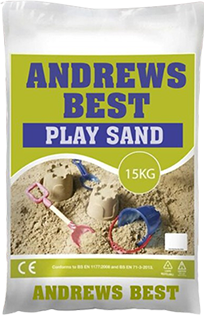
The humble sandbag, a longstanding ally in flood defense, military fortifications, and even construction, is undergoing a remarkable transformation. Driven by environmental concerns and the push for sustainability, innovations in sandbag materials are leading the charge towards more eco-friendly alternatives. This evolution from traditional burlap to advanced biodegradable options showcases a commitment to reducing environmental impact while enhancing functionality.
The Era of Burlap
Historically, sandbags were synonymous with burlap, a natural fabric made from jute or sisal fibers. Burlap bags were favored for their durability, breathability, and ease of use. However, while burlap is biodegradable and relatively eco-friendly, it has limitations, including susceptibility to rot and mildew when exposed to moisture over time. These shortcomings prompted the search for more resilient and sustainable materials.
Synthetic Advancements
The introduction of synthetic materials such as polyethylene brought about a significant shift. These plastics offered superior resistance to water, UV light, and tearing, extending the life span of sandbags and reducing the frequency of replacement. However, the environmental toll of these non-biodegradable materials became apparent, sparking a movement towards developing more sustainable alternatives.
Biodegradable Innovations
In response to environmental concerns, recent advancements have focused on creating fully biodegradable and even compostable sandbag options.
These new materials aim to maintain the strength and durability of their synthetic predecessors while ensuring that they break down harmlessly in the environment.
- Polylactic Acid (PLA) Bags: Made from fermented plant starch (usually corn), PLA bags are a popular biodegradable option. Although they decompose under industrial composting conditions, they offer a similar performance level to polyethylene bags in terms of strength and water resistance.
- Jute and Cotton Blends: Innovations have also led to the development of sandbags made from blends of natural fibers like jute and cotton. These materials improve upon the durability of traditional burlap bags while maintaining full biodegradability.
Environmental Impact and Functional Balance
The shift towards biodegradable sandbag materials reflects a broader effort to balance functional requirements with environmental sustainability. These innovations aim to provide effective flood defense and construction solutions without leaving a lasting footprint on the planet. Moreover, as these materials decompose, they contribute to soil health, unlike synthetic alternatives that contribute to pollution and waste.
Challenges and Future Directions
Despite the progress, challenges remain in balancing biodegradability with the functional demands of sandbag applications, especially in terms of water resistance and long-term durability. Ongoing research and development are focused on enhancing the performance of biodegradable materials, exploring coatings and treatments that can extend their functional life without compromising their environmental benefits.
Furthermore, the adoption of these innovative materials hinges on cost competitiveness and supply chain adjustments. As consumer awareness and demand for sustainable products increase, it is anticipated that these eco-friendly sandbags will become more prevalent, driven by both regulatory pressures and market dynamics.
Conclusion
The journey from burlap to biodegradable options marks a significant stride in the evolution of sandbag materials. These innovations not only exemplify the construction and environmental sectors’ adaptability but also their commitment to forging a sustainable future. As technology advances, the humble sandbag stands as a testament to the possibilities of combining traditional wisdom with modern innovation for environmental stewardship.




